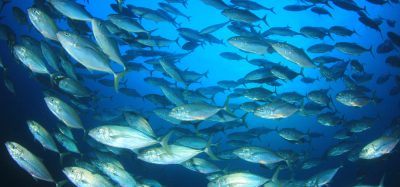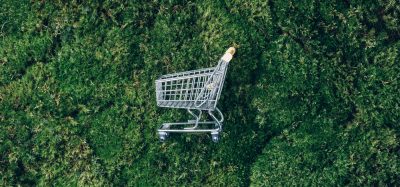Climate change threatens some of the world’s best wines
- Like
- Digg
- Del
- Tumblr
- VKontakte
- Buffer
- Love This
- Odnoklassniki
- Meneame
- Blogger
- Amazon
- Yahoo Mail
- Gmail
- AOL
- Newsvine
- HackerNews
- Evernote
- MySpace
- Mail.ru
- Viadeo
- Line
- Comments
- Yummly
- SMS
- Viber
- Telegram
- Subscribe
- Skype
- Facebook Messenger
- Kakao
- LiveJournal
- Yammer
- Edgar
- Fintel
- Mix
- Instapaper
- Copy Link
Posted: 31 July 2017 | New Food | No comments yet
Global warming is affecting the taste and production of wine growing regions across the world. Finding genes better suited to stress and pests can boost resilience.


Millions of people across Europe have enjoyed soaring temperatures in the summer of 2017, with sizzling barbeques, good food, and fine wine. But as both global and regional records are broken, the wine growers supplying these summer feasts are feeling the effects of climate change on their trade.
This is not a problem for the future: climate change is already impacting vineyards all over the world, including regions producing household names such as Bordeaux, Alsace and Chianti. Increased heat and CO2 levels can affect the flavour and ripening times of the fruit. Higher temperatures also cause pests and pathogens to thrive. At the local level, unpredictable weather can bring damaging downpours and hailstorms can decimate yields in hours.
“The impact of climate change on wine production is quite real,” says Dr Elizabeth Wolkovich, an ecologist at Harvard University Center for the Environment, Massachusetts, US.
“Producing good (or great) wine grapes requires an accurate matching of the wine grape variety to the local climate. But with climate change the challenges will only grow as temperatures continue to rise and precipitation regimes continue to shift.”
France warmed by about 1.5 Celsius during the last century, and global wine production fell by 3.2% in 2016, particularly in the southern hemisphere where Brazil suffered an eye-watering 55% drop.
Scientists and industry are under pressure to respond and have been busy with projects that combine academic expertise and more practical industry know-how. Since 2013, Dr Anne-François Adam-Blondon, Director of Research in the Plant Biology and Breeding division of the National Institute for Agricultural Research (INRA), Paris, France, has led InnoVine. The European project looks to bring climate-change resilient advances by investigating wine production from the vineyard, plant and genomic level.
Of these three main programme themes, Adam-Blondon says there were many interesting outputs, but that breeding varieties more resistant to disease and environmental stresses was most effective. “Adopting a new genetic material better adapted to stress, such as new varieties and new clones, always had a greater impact than any other way of dealing with the problem,” she says.
Researchers undertook more than 2000 genetic tests for diseases such as powdery and downy mildew as well as black rot, finding many new sources of pest and stress resistance that plant breeders can incorporate into new varieties.
Coordinating a huge amount of data, from testing new agronomic systems at the vineyard level to measuring desirable traits like grape sugar concentrations at the plant level, required complex organisation.
Larger vineyards already use sophisticated mathematical models to help them make decisions, like harvesting earlier if the temperature is consistently higher than expected because the grapes ripen in the sun more quickly. This was an opportunity for the team to integrate new project results into the models, or Decision Support Systems (DSS) as they are known.
DSS can assist in reducing pesticide applications, for example, by modelling the development of a population of pathogen against the weather, and the developmental stage of the plant. “The models try to put all these parameters, varietal and climatic, as input and to predict the output in term of disease”, says Adam-Blondon.
“The InnoVine project injected into the DSS model the varietal and developmental part of it. The same was done for models predicting berry composition, which is related to vintage quality, in relation to climate parameters and varietal behaviours.”
With some areas predicted to warm and others to cool, climate change will create both winners and losers in the wine industry as current growing regions shift and new areas like southern England open up for wine cultivation. It is a world of problems, but also opportunities.
“Much of the impact of climate change on wine will be due to the need to shift vineyards to upper elevations in new locations, many of which may be in forest reserves or have strong implications for local water use,” says Dr Lee Hannah, senior scientist for climate change biology at the Moore Center for Science of Conservation International, Virginia, US. “We need to work on the farm level and plant level, as InnoVine is doing, but the real future sustainability for the industry is in collaborative land use planning.”
Working at the landscape level presents huge challenges because of the scales involved, as well as working with multiple industrial partners. “We had to face the reality that testing a holistic system in a perennial crop is a very important commitment in term of time and money,” says Adam Blondon, adding that they had very interesting multidisciplinary brainstorming sessions, identifying gaps and leading to a better understanding between all partners.









